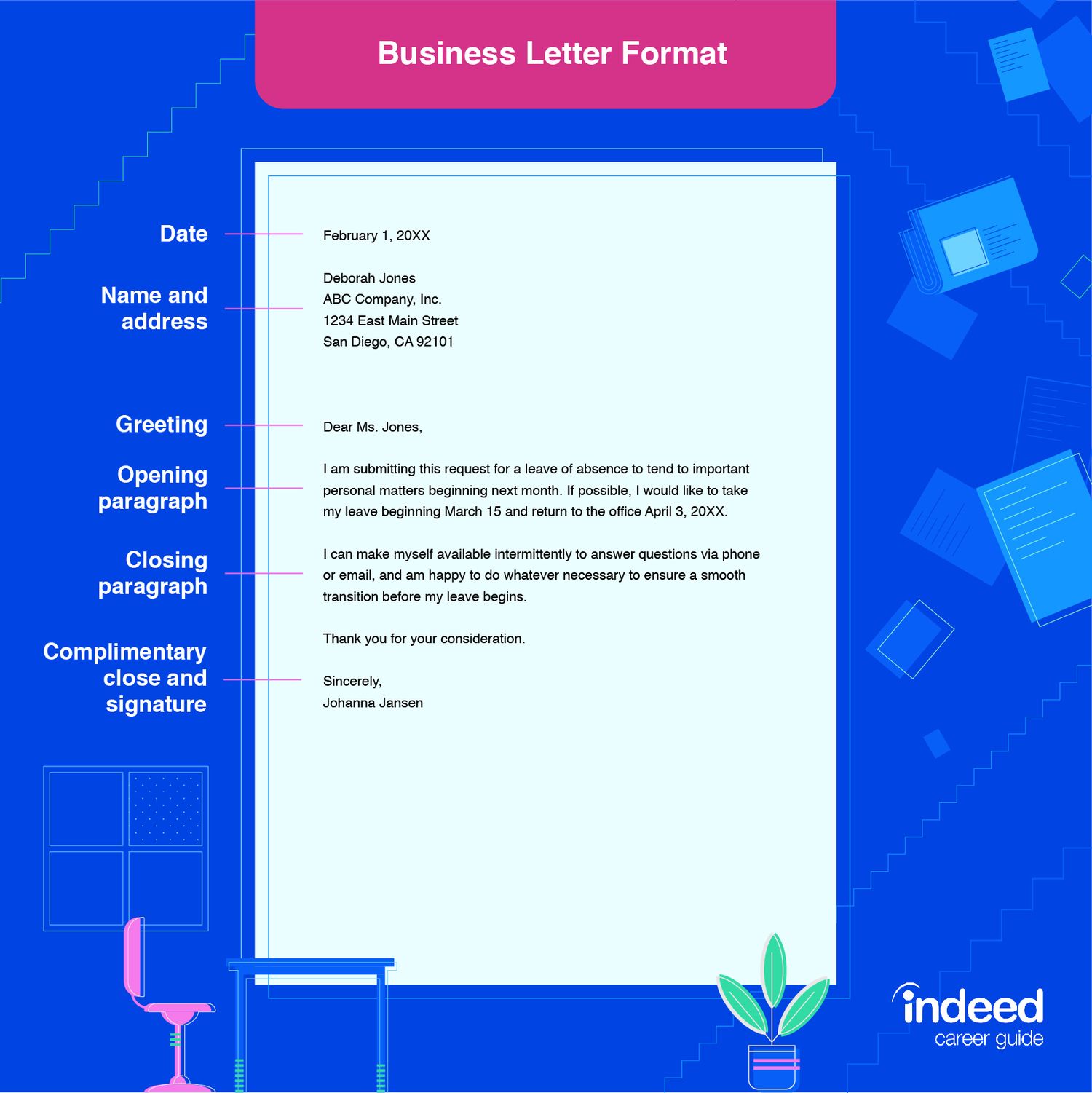Being able to write in a professional manner can help you improve your standing at work and may even lead to new professional opportunities. By implementing strong business writing techniques when communicating with coworkers, clients and higher-ups, you’re demonstrating respect for these professional relationships. In this article, we discuss what business letter salutations are, why they are important to use, when they are appropriate, and we include tips and examples.

Image description
What is a business letter salutation?
A business letter salutation is a formal greeting used in professional documents, including business letters, job applications and formal emails.
Related: 5 Steps For Great Business Writing (With Tips)
Why is a business letter salutation important?
Using business letter salutations to address your recipient is important for three reasons:
It enhances professionalism. Using the correct phrasing, punctuation and personal or professional title in a business letter salutation can demonstrate your professionalism and your strength in business writing.
It personalizes the document. Including the recipient’s full name in the salutation of your business letter lets them know that they aren’t reading a mass-produced letter but rather something intended specifically for them.
It demonstrates your professional tone. By providing a formal salutation to greet your recipient, you are setting a professional tone that will carry through your letter.
When should you use a business letter salutation?
There are many instances where you should include an appropriate business salutation, each with its own unique reasons:
Cover letter
A cover letter is often your first opportunity to impress a potential employer and demonstrate your business writing skills. Using the proper salutation in your cover letter can help an employer determine whether or not they should consider you for the position.
Business email
A business email can be addressed to someone within or outside of your company. This form of business writing requires you to use the same formal salutations as you would in a paper format.
Formal business letter
This type of business document is used to address someone outside of your company. This is an instance when it would be appropriate to use a personal title in front of the recipient’s first name.
Business memo
A business memo is a form of business writing used to address colleagues inside a company. For business memos, you should still use a formal salutation to address the department or group of individuals to whom you are sending the memo.
Related: Professional Email Salutations: Tips and Examples
Tips for writing business letter salutations
There are a variety of rules and aspects to consider when writing a business letter salutation. Follow these tips regarding proper greetings and common practices in business letter salutations:
Start with the word “Dear”
Although in certain situations it is appropriate to use “Greetings” or “Hello” prior to the name of the recipient, using the word “Dear” at the beginning of a business letter is the preferred professional approach. When in doubt, use “Dear.“
Consider your relationship with the intended recipient
How well do you know the recipient? If it is a coworker, you can address them by “Dear” followed by their first name only. However, if you don’t know the recipient well enough or at all, use “Dear” followed by their full name.
Research company personnel
If you are applying to a job and the job description has left out the intended recipient for your cover letter, you can do your own research to find the name of the department head you are applying to and address your letter to that person.
Address recipient by job title
If you are applying for a job and cannot find the name of the hiring manager or department head, you can start your salutation with “Dear” followed by the senior job title most closely associated with your potential position.
Address recipient by personal title
You can address the recipient by starting with “Dear” followed by a personal title, such as “Mr.” or “Ms.” If you have the full name of the recipient of your business letter, you can enhance the formal nature of the letter by starting with “Dear” followed by a personal salutation, such as “Dear Ms. Levatson.“
When in doubt, use “Ms.”
If you want to use a personal title ahead of a female recipient’s full name, but you are unsure of her marital status, it is always best to use the title “Ms.” followed by the recipient’s name instead of “Miss” or “Mrs.“
Complete with comma or colon
You can end your salutation either with a comma or a colon. Colons can be a popular choice in memo writing.
Double-check your spelling
Use online resources, such as company websites and social media profiles, to check the spelling of your recipient’s name. This can help maintain your professionalism and show your attention to detail, especially for recipients whose names have an uncommon spelling.
When in doubt, substitute “Dear (recipient name)” with “To Whom It May Concern”
If you cannot find the name or appropriate job title to use in a business letter salutation, you can use the phrase “To Whom It May Concern” as a last-resort option.
Related: Guide To Memo Writing with Tips and Examples
Business letter salutation examples
Here are several examples of appropriate salutations that can be applied to business letters and related documents:
-
Dear Marketing Manager,
-
Dear Margaret Bowman,
-
Dear Mr./Ms./Mrs./Miss Bowman,
-
Dear Dr. Bowman,
-
Dear Dr. and Mr. Bowman,
-
Dear Officer Yu,
-
Dear Margaret, (if personally familiar)
-
Dear Communications Department:
-
To Whom It May Concern,
While the examples above use “Dear,” you can also use “Hello,” “Greetings” or some other professional salutation. You should also avoid using “To Whom It May Concern” wherever possible since it can come across as impersonal and outdated depending on the audience.
It is also usually best to use gender-neutral salutations to avoid assuming the audience’s gender, such as “Dear Margaret Bowman” instead of “Dear Ms. Bowman.”





